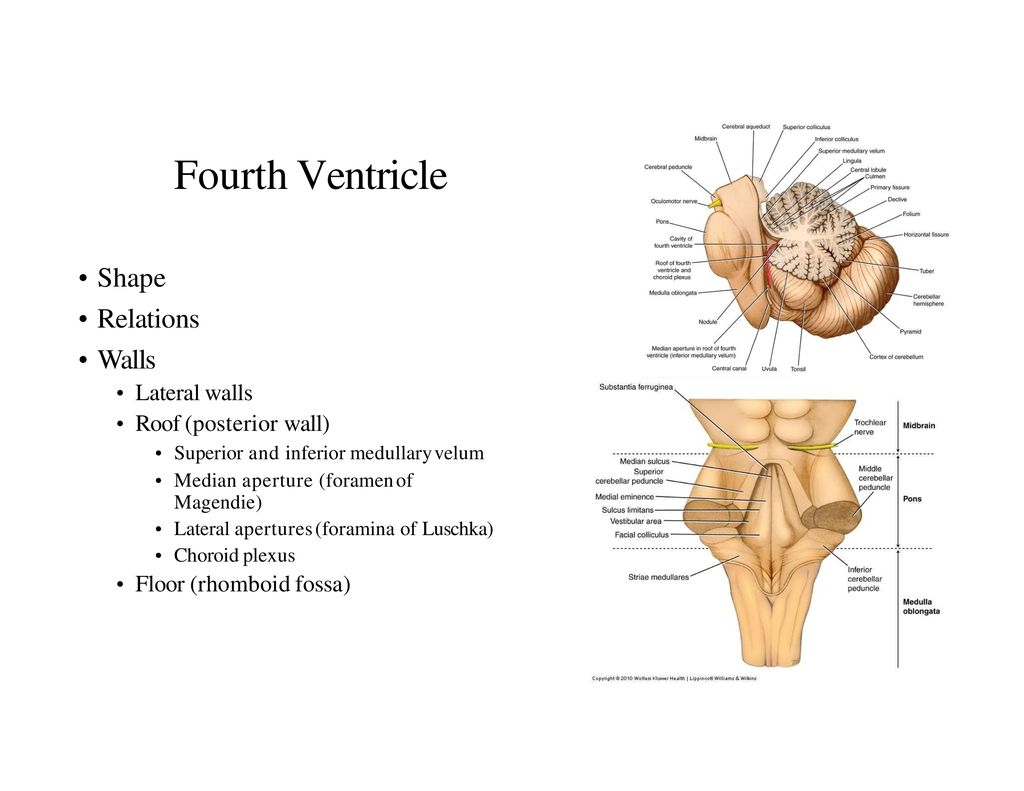The fourth ventricle contains cerebrospinal fluid.
Fourth ventricle roof and floor.
The lateral boundaries are formed on each side by the superior cerebellar peduncle the inferior cerebellar peduncle and the cuneate and gracile tubercles.
The fourth ventricle has lateral boundaries a roof and a floor.
Inside the brain there are four cavities called ventricles.
The roof is composed of the cerebellum.
Csf produced and or flowing into the fourth ventricle can exit to the subarachnoid space through lateral apertures and a single median aperture located in the inferiorportion of the roof.
This ventricle has a roof and a floor.
The bounds of the 4th ventricle contain sidelong boundaries a roof and a floor lateral bounds lateral walls.
The posterior boundary or roof of the fourth ventricle is very thin and concealed by the cerebellum.
The fourth ventricle has a roof at its upper posterior surface and a floor at its lower anterior surface and side walls formed by the cerebellar peduncles nerve bundles joining the structure on the posterior side of the ventricle to the structures on the anterior side.
On every side the 4th ventricle is limted inferiolaterally by the inferior cerebellar peduncle sup plemented by gracile and cuneate tubercles and superolaterally by the superior cerebellar peduncle.
The caudal tip of the fourth ventricle where it becomes the central canal is known as the obex.
The fourth ventricle has an anterior ventral floor with a characteristic diamond shape named the rhomboid fossa and a posterior dorsal tent shaped roof.
The lowermost portion of the floor of the fourth ventricle is called the calamus scriptorius as it appears to resemble the tip of a pen.

